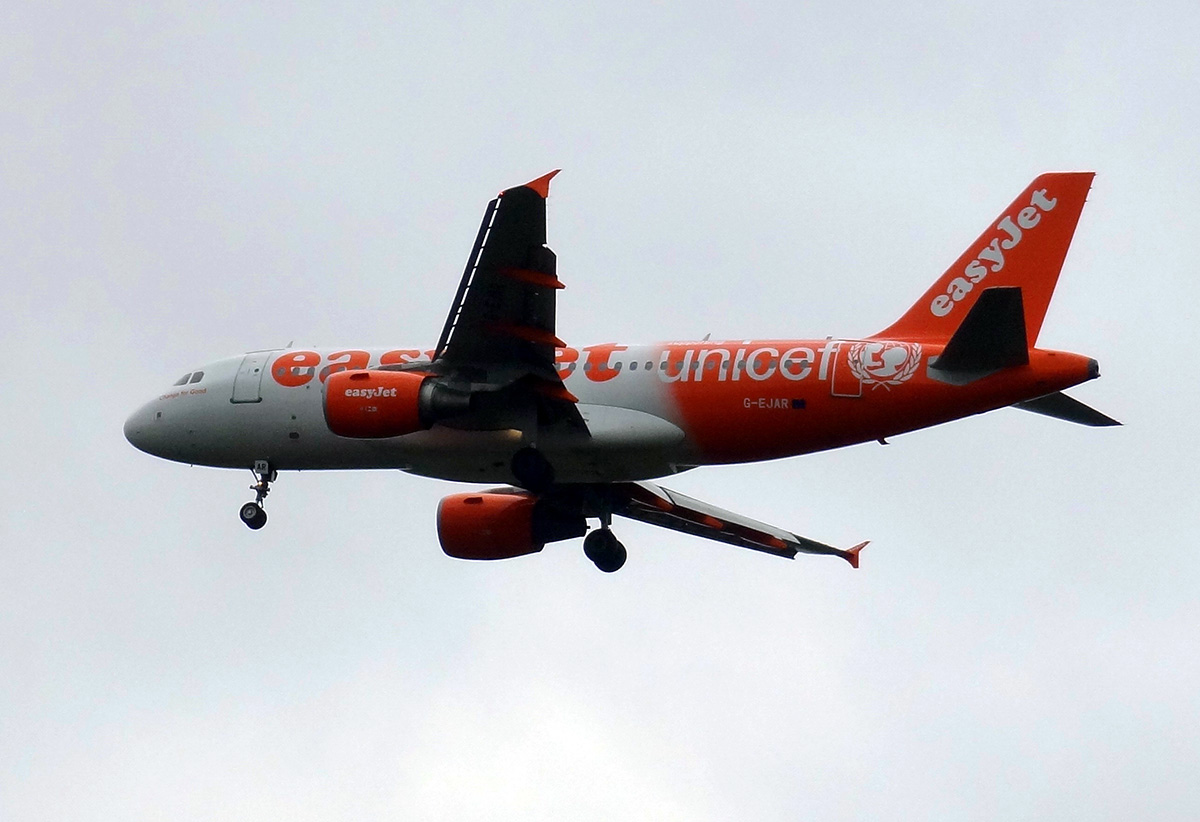 The USA has seen many horizontal mergers in recent years. This has turned industries that were once relatively competitive into oligopolies, resulting in lower output and higher prices for consumers.
The USA has seen many horizontal mergers in recent years. This has turned industries that were once relatively competitive into oligopolies, resulting in lower output and higher prices for consumers.
In Europe, by contrast, many markets are becoming more competitive. The result is that in industries such as mobile phone services, airlines and broadband provision, prices are considerably lower in most European countries than in the USA. As the French economist, Thomas Philippon, states in a Guardian article:
When I landed in Boston in 1999, the United States was the land of free markets. Many goods and services were cheaper than in Europe. Twenty years later, American free markets are becoming a myth.
According to Asher Schechter (see linked article below):
Nearly every American industry has experienced an increase in concentration in the last two decades, to the point where … sectors dominated by two or three firms are not the exception, but the rule.
The result has been an increase in deadweight loss, which, according to research by Bruno Pelligrino, now amounts to some 13.3 per cent of total potential surplus.
Philippon in his research estimates that monopolies and oligopolies “cost the median American household about $300 a month” and  deprive “American workers of about $1.25tn of labour income every year”.
deprive “American workers of about $1.25tn of labour income every year”.
One industry considered by the final two linked articles below is housebuilding. Since the US housing and financial crash of 2007–8 many US housebuilders have gone out of business. This has meant that the surviving companies have greater market power. According to Andrew van Dam in the linked Washington Post article below:
They have since built on that advantage, consolidating until many markets are controlled by just a few builders. Their power has exacerbated the country’s affordable-housing crisis, some economists say.
According to research by Luis Quintero and Jacob Cosman:
… this dwindling competition has cost the country approximately 150 000 additional homes a year – all else being equal. With fewer competitors, builders are under less pressure to beat out rival projects, and can time their efforts so that they produce fewer homes while charging higher prices.
Thanks to lobbying of regulators and politicians by businesses and various unfair, but just about legal, practices to exclude rivals, competition policy in the USA has been weak.
In the EU, by contrast, the competition authorities have been more active and tougher. For example, in the airline industry, EU regulators have “encouraged the entry of low-cost competitors by making sure they could get access to takeoff and landing slots.” Politicians from individual EU countries have generally favoured tough EU-wide competition policy to prevent companies from other member states getting an unfair advantage over their own country’s companies.
Articles
Questions
- What are the possible advantages and disadvantages of oligopoly compared with markets with many competitors?
- How can concentration in an industry be measured?
- Why have US markets become more concentrated?
- Why have markets in the EU generally become more competitive?
- Find out what has happened to levels of concentration in the UK housebuilding market.
- What are the possible effects of Brexit on concentration and competition policy in the UK?
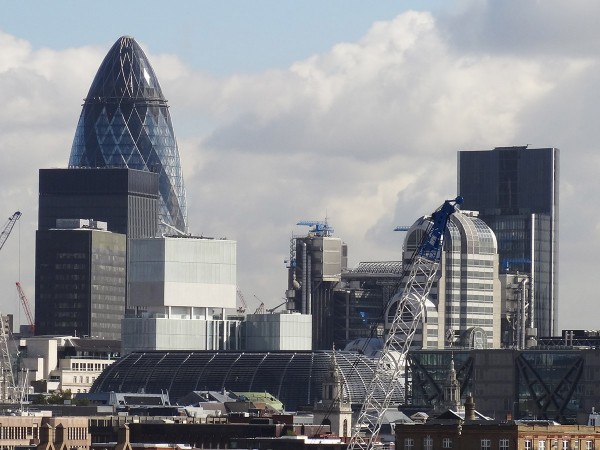 The proposed $100 billion takeover of SABMiller by AB InBev is the third largest in history. It provides a good example of how the UK Panel on Takeovers and Mergers operates.
The proposed $100 billion takeover of SABMiller by AB InBev is the third largest in history. It provides a good example of how the UK Panel on Takeovers and Mergers operates.
Economics textbooks often discuss competition authorities such as the Competition and Markets Authority but they rarely mention the UK Panel on Takeovers and Mergers (The Panel).The Panel is an independent body that was established in 1968. It has up to 35 members who all have professional expertise on the subject of takeovers i.e. they are usually employees of or have been seconded from (i) law and accountancy firms (ii) corporate brokers (iii) investment banks.
The Panel’s main responsibility is to implement the City Code on Takeovers and Mergers. This code sets out a number of ground-rules that companies must follow if they are involved in a merger or takeover. These rules became statutory in 2006 following the Companies Act of that year. The following objectives underpin the code:
|
|
| • |
To ensure that the shareholders of the target company in a proposed takeover are treated fairly and are given the opportunity to make an informed decision about the relative merits of the takeover. |
| • |
To ensure that the whole takeover/merger process operates in a structured and systematic manner. |
The Panel does not make any judgements on the commercial case for the takeover or merger. This is left to the management and shareholders of the companies involved. It also does not get involved with competition issues such as whether the newly established firm would have significant market power. These decisions in the UK are left to the Competition and Markets Authority. If the merger has a European element/dimension to it then it is investigated by the European Commission.
The rules that made up the code remained largely unchanged from 1968 until some important changes were made in September 2011. This followed the controversial takeover of Cadbury by the US food company Kraft. Kraft had first announced its intention to make an offer to acquire Cadbury in September 2009 but a deal was not agreed by the management of Cadbury until January 2010. Concerns were expressed at the time that this long and protracted takeover had made it very difficult for Cadbury to run its business effectively because of the uncertainty it created. It was also argued that the rules gave the acquiring company a significant tactical advantage in the takeover process and made it too easy for them to succeed.
One important change is that a targeted company must publicly announce the name of any companies that have made an approach about a possible deal. This announcement then activates a 28 day bid deadline period known as ‘pusu’ which stands for ‘put up’ (the money: i.e. make a formal bid) or ‘shut up’ (and walk away). This means that if the potential acquirer has not made a formal bid by the end of this 28-day period it is prohibited from making a bid for another 6 months. A request can be made to the Takeover Panel for an extension to this initial 28-day period, but this can only be done with the agreement of the target company.
Therefore SABMiller was obliged to announce on 15th September 2015 that
“Anheuser-Busch InBev SA/NV (AB InBev) has informed SABMiller that it intends to make a proposal to acquire SABMiller. No proposal has yet been received and the Board of SABMiller has no further details about the terms of any such proposal.”
The timing of this announcement made 14th October the official deadline by which AB InBev had to make a formal offer. After rejecting five bids, an offer of £44 a share by AB InBev was agreed in principle by the SABMiller management team on 13th October. 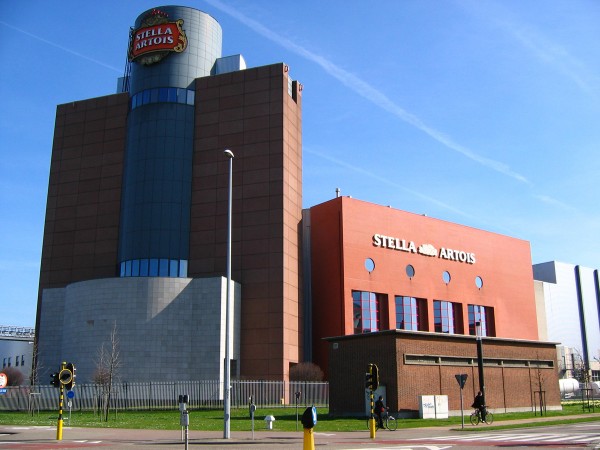 Given the size and complexity of the deal (i.e. AB InBev is financing the deal by borrowing over $70 billion from 21 different banks), an initial two-week extension until 28th October was granted by the Takeover Panel. This could only have been granted with the agreement of SABMiller. Another one-week extension was agreed and then, on 4th November, SABMiller management made the following announcement.
Given the size and complexity of the deal (i.e. AB InBev is financing the deal by borrowing over $70 billion from 21 different banks), an initial two-week extension until 28th October was granted by the Takeover Panel. This could only have been granted with the agreement of SABMiller. Another one-week extension was agreed and then, on 4th November, SABMiller management made the following announcement.
“In order to allow SABMiller and AB InBev to finalise their discussions and satisfy the pre-conditions to the announcement of a formal transaction, the board of SABMiller has requested that the Panel on Takeovers and Mergers further extends the relevant deadline until 5pm November 11, 2015.”
One major issue has been the potential impact of the takeover on the level of competition in the US market. AB InBev and SABMiller already have market shares of 46% and 27% respectively. SABMiller’s strong presence in this market is a result of its joint venture, MillerCoors, with Molson Coors. One reason behind the last request for an extension is to grant enough time for a deal to be finalised for the sale of SABMiller’s 58% stake in MillerCoors to Molson Coors. Without this sale the US competition authorities would not approve the takeover.
Most observers believe that it will take a year for the deal to be completed and it will be interesting to chart its progress over the next 12 months.
Postscript: AB InBev announced on 11th November that it had made a formal offer of £71 billion to acquire SABMiller and SABMiller’s share in MillerCoors had been sold to Molson Coors for $12 billion.
SABMiller to seek another Takeover Panel extension for AB InBev takeover The Telegraph, Ben Martin (04/11/15)
AB InBev and SABMiller allay concerns about 68bn MegaBrew deal The Telegraph, Ben Martin (28/10/15)
AB InBev, SABMiller extend takeover deadline to Nov.4 Reuters, Philip Blenkinsop (28/10/15)
SABMiller agrees AB Inbev takeover deal of £68bn The Guardian, Sean Farrell (13/10/15)
SABMiller is AB Inbev’s toughest takeover yet. It may not be its last The Economist (14/10/15)
Brewery Battle: AB Inbev and the Craft Beer Challenge BBC News, Peter Shadbolt (13/10/15)
Beer Giants AB Inbev and SABMiller Agree Takeover Terms BBC News (13/10/15)
Questions
- The proposed takeover of SABMiller by AB InBev would be the third largest in history. What are the two biggest deals?
- The European Commission investigates ‘large’ mergers that have an ‘EU dimension’. On what basis does the European Commission judge if a merger is large or has an EU dimension?
- On what basis are mergers judged by the Competition and Markets Authority in the UK?
- What is a ‘virtual bid’ period? How did the ‘pusu’ bid deadline operate before the changes were introduced in 2011?
- Pfizer’s bid for Astrazeneca did not succeed in May 2014. Some people blamed the collapse of the deal on the 28-day ‘pusu’ deadline and rule 2.5 (i) of the code. What is rule 2.5 (i) and how did it contribute towards the failure of this deal?
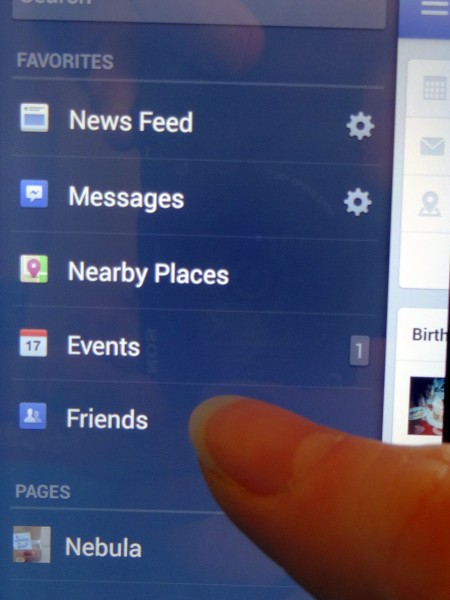 Facebook has announced that it’s purchasing the messaging company WhatsApp. It is paying $19 billion in cash and shares, a sum that dwarfs other acquisitions of start-up companies in the app market. But what are the reasons for the acquisition and how will it affect users?
Facebook has announced that it’s purchasing the messaging company WhatsApp. It is paying $19 billion in cash and shares, a sum that dwarfs other acquisitions of start-up companies in the app market. But what are the reasons for the acquisition and how will it affect users?
WhatsApp was founded less than five years ago and has seen massive growth and now has some 450 million active users, 70% of whom use it daily. This compares with Twitter’s 240 million users. An average of one million new users are signing up to WhatsApp each day. As the Wall Street Journal article, linked below, states:
Even by the get-big-fast standards of Silicon Valley, WhatsApp’s story is remarkable. The company, founded in 2009 by Ukrainian Jan Koum and American Brian Acton, reached 450 million users faster than any company in history, wrote Jim Goetz, a partner at investor Sequoia Capital.
Facebook had fewer than 150 million users after its fourth year, one third that of WhatsApp in the same time period.
Yet, despite its large user base, WhatsApp has just 55 employees, including 32 engineers.
For the user, WhatsApp offers a cheap service (free for the first year and just a 99¢ annual fee thereafter). 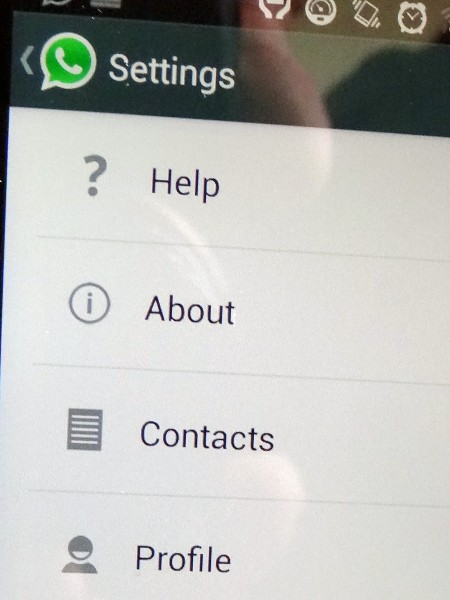 There are no charges for sending or receiving text, pictures and videos. It operates on all mobile systems and carries no ads. It also offers privacy – once sent, messages are deleted from the company’s servers and are thus not available to government and other agencies trying to track people.
There are no charges for sending or receiving text, pictures and videos. It operates on all mobile systems and carries no ads. It also offers privacy – once sent, messages are deleted from the company’s servers and are thus not available to government and other agencies trying to track people.
With 450 million current active users, this means that revenue next year will not be much in excess of $450 million. Thus it would seem that unless Facebook changes WhatsApp’s charging system or allows advertising (which it says it won’t) or sees massive further growth, there must have been reasons other than simple extra revenue for the acquisition.
Other possible reasons are investigated in the videos and articles below. One is to restrict competition which threatens Facebook’s own share of the messaging market: competition that has seen young people move away from Facebook, which they see is becoming more of a social media platform for families and all generations, not just for the young.
Videos and podcasts
 Facebook pays billions for WhatsApp Messenger smartphone service Deutsche Welle, Manuel Özcerkes (19/2/14)
Facebook pays billions for WhatsApp Messenger smartphone service Deutsche Welle, Manuel Özcerkes (19/2/14)
 Facebook’s WhatsApp buy no bargain Reuters, Peter Thal Larsen (20/2/14)
Facebook’s WhatsApp buy no bargain Reuters, Peter Thal Larsen (20/2/14)
 Facebook Agrees To Buy WhatsApp For $19bn Sky News, Greg Milam (20/2/14)
Facebook Agrees To Buy WhatsApp For $19bn Sky News, Greg Milam (20/2/14)
 Facebook Eliminates Competitor With WhatsApp Bloomberg TV, Om Malik, David Kirkpatrick and Paul Kedrosky (20/2/14)
Facebook Eliminates Competitor With WhatsApp Bloomberg TV, Om Malik, David Kirkpatrick and Paul Kedrosky (20/2/14)
 Why WhatsApp Makes Perfect Sense for Facebook Bloomberg TV, Om Malik, David Kirkpatrick and Paul Kedrosky (20/2/14)
Why WhatsApp Makes Perfect Sense for Facebook Bloomberg TV, Om Malik, David Kirkpatrick and Paul Kedrosky (20/2/14)
 Facebook buying WhatsApp for $19bn BBC News, Mike Butcher (20/2/14)
Facebook buying WhatsApp for $19bn BBC News, Mike Butcher (20/2/14)
 Is Facebook’s acquisition of WhatsApp a desperate move? CNBC News, Rob Enderle (19/2/14)
Is Facebook’s acquisition of WhatsApp a desperate move? CNBC News, Rob Enderle (19/2/14)
 Facebook’s $19bn WhatsApp deal ‘unjustifiable’ BBC Today Programme, Larry Magid (20/2/14)
Facebook’s $19bn WhatsApp deal ‘unjustifiable’ BBC Today Programme, Larry Magid (20/2/14)
Articles
Facebook to buy WhatsApp for $19 billion in deal shocker ReutersGerry Shih and Sarah McBride (20/2/14)
Facebook to Pay $19 Billion for WhatsApp Wall Street Journal, Reed Albergotti, Douglas MacMillan and Evelyn M. Rusli (19/2/14)
Facebook to buy WhatsApp for $19bn The Telegraph, Katherine Rushton (19/2/14)
Facebook buys WhatsApp: Mark Zuckerberg explains why The Telegraph (19/2/14)
WhatsApp deal: for Mark Zuckerberg $19bn is cheap to nullify the threat posed by messaging application The Telegraph, Katherine Rushton (20/2/14)
Why did Facebook buy WhatsApp? TechRadar, Matt Swider (20/2/14)
What is WhatsApp? What has Facebook got for $19bn? The Guardian, Alex Hern (20/2/14)
Facebook to buy messaging app WhatsApp for $19bn BBC News (20/2/14)
WhatsApp – is it worth it? BBC News, Rory Cellan-Jones (20/2/14)
Facebook buys WhatsApp: what the analysts say The Telegraph (19/2/14)
Facebook ‘dead and buried’ as teenagers switch to WhatsApp and Snapchat – because they don’t want mum and dad to see their embarrassing pictures Mail Online (27/12/13)
Facebook and WhatsApp: Getting the messages The Economist (22/2/14)
Questions
- Are Facebook and WhatsApp substitutes or complements, or neither?
- What does Facebook stand to gain from the acquisition of WhatsApp? Is the deal a largely defensive one for Facebook?
- Has Facebook paid too much for WhatsApp? What information would help you answer this question?
- Would it be a good idea for Facebook to build in the WhatsApp functionality into the main Facebook platform or would it be better to keep the two products separate by keeping WhatsApp as a self contained company?
- What effects will the acquisition have on competition in the social media and messaging market? Is this good for the user?
- Will the deal attract the attention of Federal competition regulators in the USA? If so, why; if not, why not?
- What are the implications for Google and Twitter?
- Find out and explain what happened to the Facebook share price after the acquisition was announced.
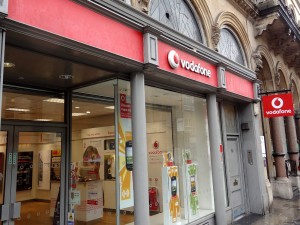 Vodafone has offered to purchase Cable & Wireless Worldwide (C&WW), with Vodafone paying 38p per share, making this deal worth £1.044bn.
Vodafone has offered to purchase Cable & Wireless Worldwide (C&WW), with Vodafone paying 38p per share, making this deal worth £1.044bn.
This deal, however, was rejected by C&WW’s largest shareholder, Orbis, within hours, as the price was not high enough, despite the 38p per share offer representing a 92% premium to the level of C&WW’s share price before the bid interest emerged in February. A spokesperson for Orbis said:
‘Although we believe the C&WW management team has handled the bid process responsibly, we have declined to give an irrevocable undertaking or letter of intent to the support the transaction.’
However, with the only other interested party, Tata Communications withdrawing, Vodafone was the only remaining bidder. As such, many suggest that this deal is a good one for the struggling business, despite Orbis’ claim that it under-values the business.
Adding a UK fixed-line cable to Vodafone’s business will increase its capacity, which is much needed at this moment in time with the added demand for mobile data from increased Smartphone usage. Cost savings are also expected from this merger, as the company will no longer have to pay to other companies to lease its fixed-line capacity.
The bid from Vodafone did help C&WW’s trading performance, which had been worsening for some time and so some shareholders will be glad of the bid. Its shares were up following this deal and it went to the top of the FTSE250. Vodafone will also benefit, as this merger would make it the second largest combined fixed and mobile line operator in the UK.
The trends of these two companies in recent years have been very much in contrast. C&WW had been the larger of the two firms up until 1999, yet the price Vodafone would now pay for the company represents a mere 1% of its current market value. The following articles consider this merger.
Vodafone bids for Cable and Wireless: The end of the line The Economist (24/4/12)
Questor shares tip: Vodafone deal looks goodThe Telegraph, Garry White(23/4/12)
Vodafone puts paid to once-revered C&WW Financial Times, Daniel Thomas (23/4/12)
Top CWW shareholder rejects sale to Vodafone Independent, Gideon Spanier (24/4/12)
CWW accepting Vodafone’s £1bn bid is a good call The Telegraph, Alistair Osborne (23/4/12)
Vodafone agrees £1bn deal for Cable & Wireless Worldwide Guardian, Julia Kollewe and Juliette Garside (23/4/12)
Vodafone agrees £1bn takeover of C&W Worldwide BBC News (23/4/12)
Questions
- Into which market structure would you place the above industry? Explain your answer.
- Which factors have caused C&WW’s worsening position? In each case, explain whether they are internal or external influences.
- What type of merger is that between C&WW and Vodafone?
- Explain some of the motives behind this merger.
- Which factors have caused these two companies to have such different trading performances in the last 15 years?
- Why was the announcement of the bid followed by better share prices for C&WW?
- Is there any reason why the competition authorities should be concerned about this merger?
Two of America’s airlines have agreed to merge to form the world’s largest carrier. The deal between United and Continental Airlines is worth £2.1 billion and the management of the two companies hope that the new airline, to be called United Airlines, will bring cost savings of some £800 million per year. Last year, the two companies lost a total of £900 million. It is also hoped to increase revenues by providing more routes and more effective competition against rivals, such as Delta Air Lines.
But just how significant will any economies of scale be and to what extent will they involve job losses? Certainly the merger has been greeted with caution by the Air Line Pilots Association and unions such as the International Association of Machinists and Aerospace Workers. Also, will the larger company be able to compete more effectively to the benefit of consumers, or will the increased market power see a rise in fares?
And this is not the only airline merger. In April, British Airways and Iberia of Spain signed a deal to merge, thereby creating one of the world’s biggest airlines. Other mergers are expected as airlines battle to cope with rising costs and lower passenger numbers in the wake of the global recession. So will such mergers benefit passengers, or will it simply result in less choice and higher fares? The following articles look at the issues
Articles
1st priority for new United-Continental combo: Keep customers, workers happy Chicago Tribune, Julie Johnsson (3/5/10)
Debating future of US Airways Philadelphia Business Today, Linda Loyd (4/5/10)
Arpey points out good, bad of United-Continental deal The Dallas Morning News, Terry Maxon (3/5/10)
US airline merger creates world’s biggest carrier Independent, Nick Clark (4/5/10)
We can’t fix fares, says chief of merging US airlines Telegraph, James Quinn (3/5/10)
United and Continental Airlines to merge BBC News (3/5/10)
British Airways and Iberia sign merger agreement BBC News (8/4/10)
Are mergers good for airlines? BBC News, Edwin Lane (4/5/10)
 United boss Glenn Tilton on Continental merger BBC News (3/5/10)
United boss Glenn Tilton on Continental merger BBC News (3/5/10)
 United and Continental bosses’ press conference on merger BBC News (3/5/10)
United and Continental bosses’ press conference on merger BBC News (3/5/10)
Data
Aviation Data & Statistics Federal Aviation Administration
TransStats RITA, Bureau of Transportation Statistics
Airline and Airport Statistics European Regions Airline Association
Questions
- What type of merger is the one between United and Continental: horizontal, vertical, conglomerate or a mixture?
- What types of economies of scale can be achieved by a merger of airlines?
- For what reasons may a merger of airlines result in higher revenues?
- To what extent will passengers (a) gain and (b) lose from airline mergers? What determines the size of these gains and losses?
- Is the airline industry an oligopoly? To what extent is there collusion between the various airlines?
- What should be the attitude of regulatory authorities across the world to airline mergers?
 The USA has seen many horizontal mergers in recent years. This has turned industries that were once relatively competitive into oligopolies, resulting in lower output and higher prices for consumers.
The USA has seen many horizontal mergers in recent years. This has turned industries that were once relatively competitive into oligopolies, resulting in lower output and higher prices for consumers.  deprive “American workers of about $1.25tn of labour income every year”.
deprive “American workers of about $1.25tn of labour income every year”.




